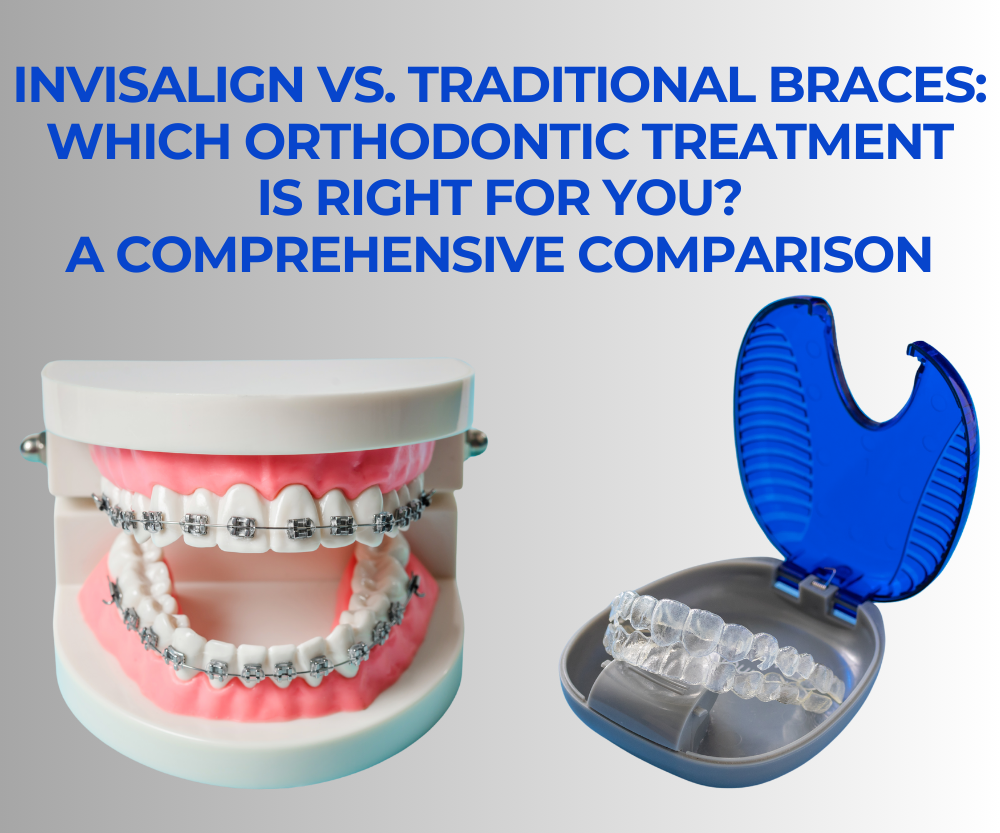
 Choosing the right orthodontic treatment is a significant decision, impacting not just your smile but also your daily life. With advancements in orthodontics, individuals now have more options than ever before. Two popular choices are Invisalign clear aligners and traditional braces. In this blog, we’ll delve into the nuances of each treatment to help you determine which option best suits your needs.
Choosing the right orthodontic treatment is a significant decision, impacting not just your smile but also your daily life. With advancements in orthodontics, individuals now have more options than ever before. Two popular choices are Invisalign clear aligners and traditional braces. In this blog, we’ll delve into the nuances of each treatment to help you determine which option best suits your needs.
Understanding Invisalign
Invisalign has revolutionized orthodontic treatment with its clear aligner system. These custom-made, transparent trays gradually shift teeth into alignment, offering a discreet alternative to traditional braces.
Advantages of Invisalign:
- Aesthetics: One of the primary appeals of Invisalign is its nearly invisible appearance. The clear aligners blend seamlessly with your teeth, allowing you to undergo orthodontic treatment without drawing attention to your smile.
- Removability: Unlike traditional braces, Invisalign trays are removable, allowing you to eat, drink, brush, and floss with ease. This flexibility promotes better oral hygiene and reduces the risk of plaque buildup and tooth decay.
- Comfort: Invisalign aligners are made from smooth, comfortable plastic, eliminating the discomfort often associated with metal brackets and wires. They cause minimal irritation to the gums and cheeks, making them an excellent choice for individuals with sensitive mouths.
Drawbacks of Invisalign:
- Compliance: For Invisalign treatment to be effective, patients must wear their aligners for at least 20-22 hours per day. Failure to comply with this requirement can prolong treatment time and compromise results.
- Limited Suitability: While Invisalign can address mild to moderate orthodontic issues, it may not be suitable for complex cases or severe malocclusions. Your orthodontist can assess your specific needs to determine if Invisalign is the right option for you.
Understanding Traditional Braces
Traditional braces consist of metal brackets affixed to the teeth, connected by wires and secured with elastic bands. Despite the emergence of newer orthodontic technologies, traditional braces remain a trusted and effective treatment option.
Advantages of Traditional Braces:
- Versatility: Traditional braces are highly versatile and can correct a wide range of orthodontic issues, including severe misalignments and bite problems.
- Predictable Results: With traditional braces, orthodontists have precise control over tooth movement, allowing for predictable and comprehensive treatment outcomes.
- Cost-Effectiveness: In some cases, traditional braces may be more cost-effective than alternative treatments, making them accessible to a broader range of patients.
Drawbacks of Traditional Braces:
- Aesthetics: Unlike Invisalign, traditional braces are noticeable and may affect the wearer’s confidence, particularly in social or professional settings.
- Maintenance Challenges: Traditional braces require regular adjustments and maintenance appointments, along with diligent oral hygiene practices to prevent plaque buildup and staining around the brackets and wires.
Choosing between Invisalign and traditional braces ultimately depends on your individual preferences, orthodontic needs, and lifestyle considerations. While both treatments have their unique advantages and drawbacks, consulting with a qualified orthodontist is the best way to determine the most suitable option for achieving your desired smile. Whether you opt for the discreet convenience of Invisalign or the reliability of traditional braces, investing in orthodontic treatment is an investment in your long-term oral health and confidence. Please contact Kossowan Orthodontics to discuss your options today.